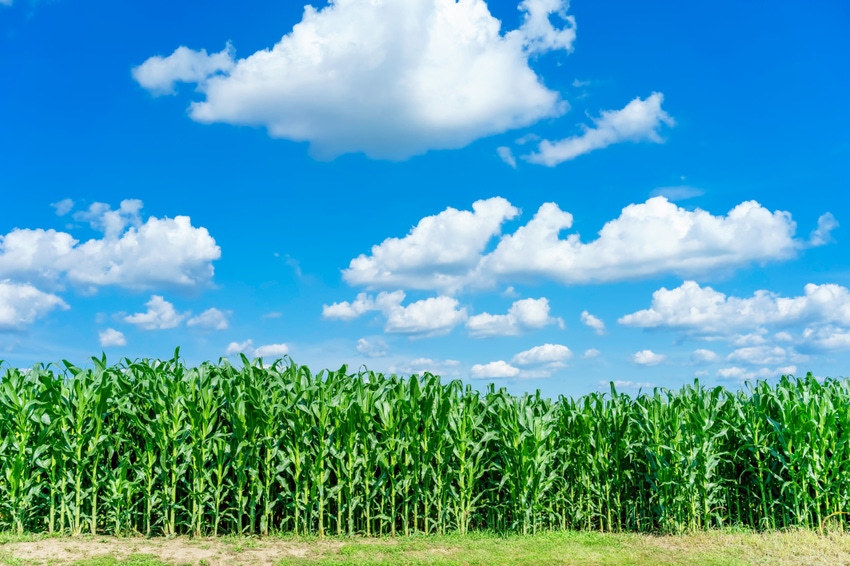ISAAA and PG Economics reports offer insight into benefits of plant biotechnology for farmers around the world.
July 9, 2018

The International Service for the Acquisition of Agri-biotech Applications (ISAAA) and PG Economics Ltd. released new studies highlighting the continued social, environmental and economic benefits of the global adoption of biotechnology in agriculture.
The complementary studies – “GM Crops: Global Socio-Economic & Environmental Impacts 1996-2016” from PG Economics and “Global Status of Commercialized Biotech/GM Crops: 2017” from ISAAA – examine the continued widespread adoption of global crop biotechnology and the significant positive socioeconomic and environmental impacts of this adoption by farmers and communities around the globe.
“Biotech crops offer enormous benefits to the environment, health of humans and animals and contributions to the improvement of socioeconomic conditions of farmers and the public,” ISAAA chair of the board Paul S. Teng said. “The recent production of next-generation biotech crops – including apples and potatoes that are not likely to spoil or become damaged, anthocyanin-enriched super-sweet pineapple, increased ear biomass and high-amylose content maize and soybeans with modified oil content, combined with the commercialization approval for an insect-resistant sugarcane – provides more diverse offerings to consumers and food producers.”
The ISAAA report shows that the global biotech crop area increased in 2017 by 3%, or 4.7 million hectares. This increase is due primarily to greater profitability stemming from higher commodity prices, increased market demand both domestically and internationally and the presence of available seed technologies. As more developing countries -- now 19 in total, including India, Pakistan, Brazil, Bolivia, Sudan, Mexico, Colombia, Vietnam, Honduras and Bangladesh -- have increased their biotech crop area and continue to allow farmers to adopt biotechnology in food production, smallholder farmers see the direct improvements this offers, providing better lives for them and their families. In fact, developing countries now account for 53% of the global biotech area planted.
ISAAA found that biotech soybean varieties accounted for 50% of the global biotech crop area. In terms of the global area for individual crops, 77% of soybeans, 80% of cotton, 32% of maize and 30% of canola were planted to biotech varieties in 2017.
Global food security depends on the inter-links between surplus food and feed-producing countries and those in deficit production. ISAAA noted that biotech soybean and maize in particular have helped developing countries meet their requirements for feed to produce animal and fish proteins.
From 1996 to 2016, biotech crops provided $186.1 billion in economic gains to some 17 million farmers, many of whom are female, smallholder farmers solely responsible for the livelihood of their families and communities, PG Economics reported.
“Global food insecurity is a huge problem in developing countries, with around 108 million people in food crisis-affected countries still at risk or experiencing food insecurity,” said Graham Brookes, director of PG Economics and co-author of the socioeconomic and environmental impact paper. “We have seen for more than 20 years now how crop biotechnology adoption in developing countries has contributed to higher yields, more secure production and increased incomes, greatly contributing to decreasing poverty, hunger and malnutrition in some regions of the globe most prone to these challenges.”
The PG Economics study also noted that great strides have already been made to reduce the footprint of agriculture and in mitigating and adapting to climate change. The latest study highlighted how biotech use in agriculture continues to contribute to reducing greenhouse gas emissions.
Coupled with the record 189.8 million hectares of biotech crops grown globally, the continued expansion of biotech adoption offers beneficial nutritional quality traits that may help offset the nutrition-draining impact of climate change on certain crops, the study found. Another aspect driving the increase may be related to research conducted by public-sector institutions on rice, bananas, potatoes, wheat, chickpeas, pigeon peas and mustard with nutritional quality traits beneficial to food producers and consumers in developing countries. Studies show that climate change can considerably reduce the protein, zinc and iron content of staple crops, putting 1.4 billion children at risk of major iron deficiencies by 2050.
For 2017, ISAAA reported that improvements were made in the commercial availability and planting of biotech fruits and vegetables with direct consumer benefits. Two generations of Innate brand potatoes have been approved in the U.S and Canada -- one variety with reduced bruising and browning and lower acrylamide content, and the other with these traits plus lower levels of reducing sugars and late blight protection -- along with non-browning Arctic apples in the U.S. and biotech eggplant in Bangladesh. These are all more sustainable products for consumers and the environment alike.
The PG Economics report noted that advances in biotech crops also allow farmers to use insecticides and herbicides more strategically, reducing the environmental impact associated with their use by 18.4% on biotech crop areas since 1996. In 2016, the biotech crop-related carbon dioxide emission savings from reduced fuel use and additional soil carbon sequestration were equal to removing 16.75 million cars from the road.
In addition, more money is making its way to farmers. In 2016, the direct global farm income benefit from biotech crops was $18.2 billion, equal to an average increase in income of $102 per hectare. Since 1996, farm incomes have increased by $186.1 billion. Biotechnology remains a strong investment for farmers. In terms of farmer investment, for each dollar invested in biotech crop seeds, farmers gained an average $3.49. In 2016, farmers in developing countries received $5.06 for each extra dollar invested in biotech crop seeds, whereas farmers in developed countries received $2.70 for each extra dollar invested in these seeds.
For more information or the executive summary of the “Global Status of Commercialized Biotech/GM Crops: 2017” report, visit www.isaaa.org. To download a copy of the PG Economics study, visit: www.pgeconomics.co.uk. The associated two papers in the peer-reviewed journal GM Crops & Food are available, with open access, at: https://www.tandfonline.com/doi/full/10.1080/21645698.2018.1464866 and https://www.tandfonline.com/doi/full/10.1080/21645698.2018.1476792.
You May Also Like

.png?width=300&auto=webp&quality=80&disable=upscale)

